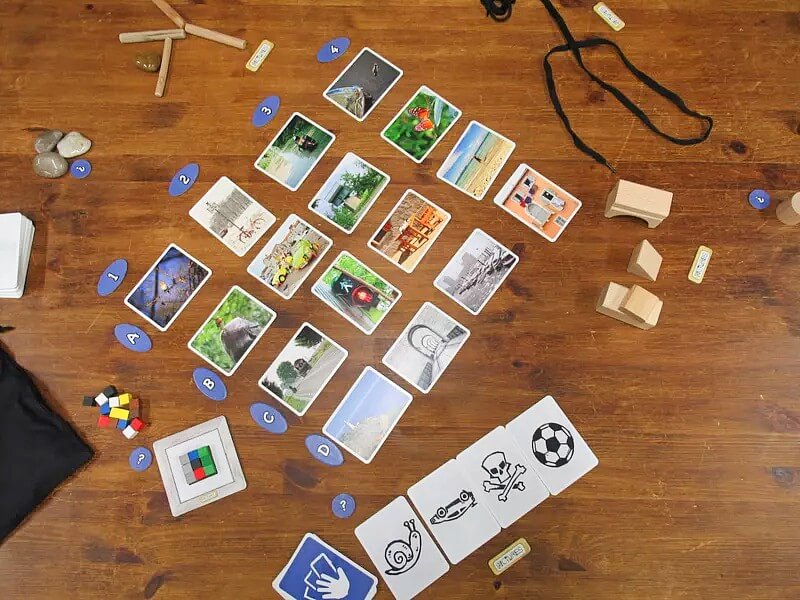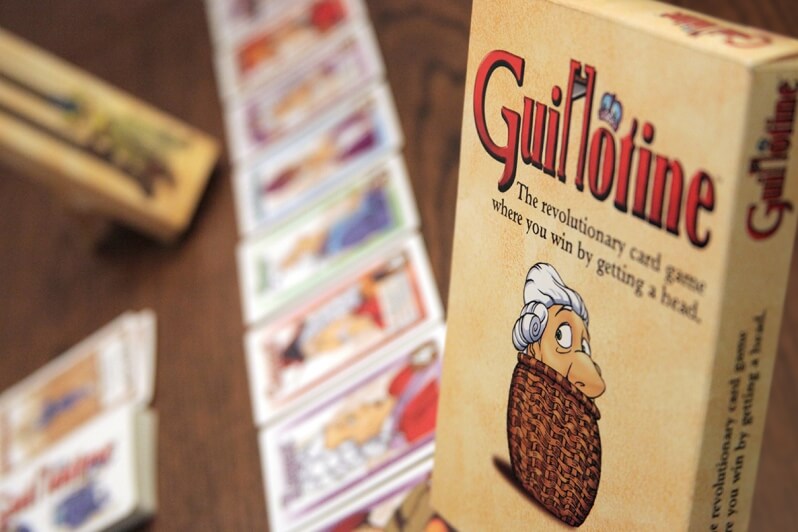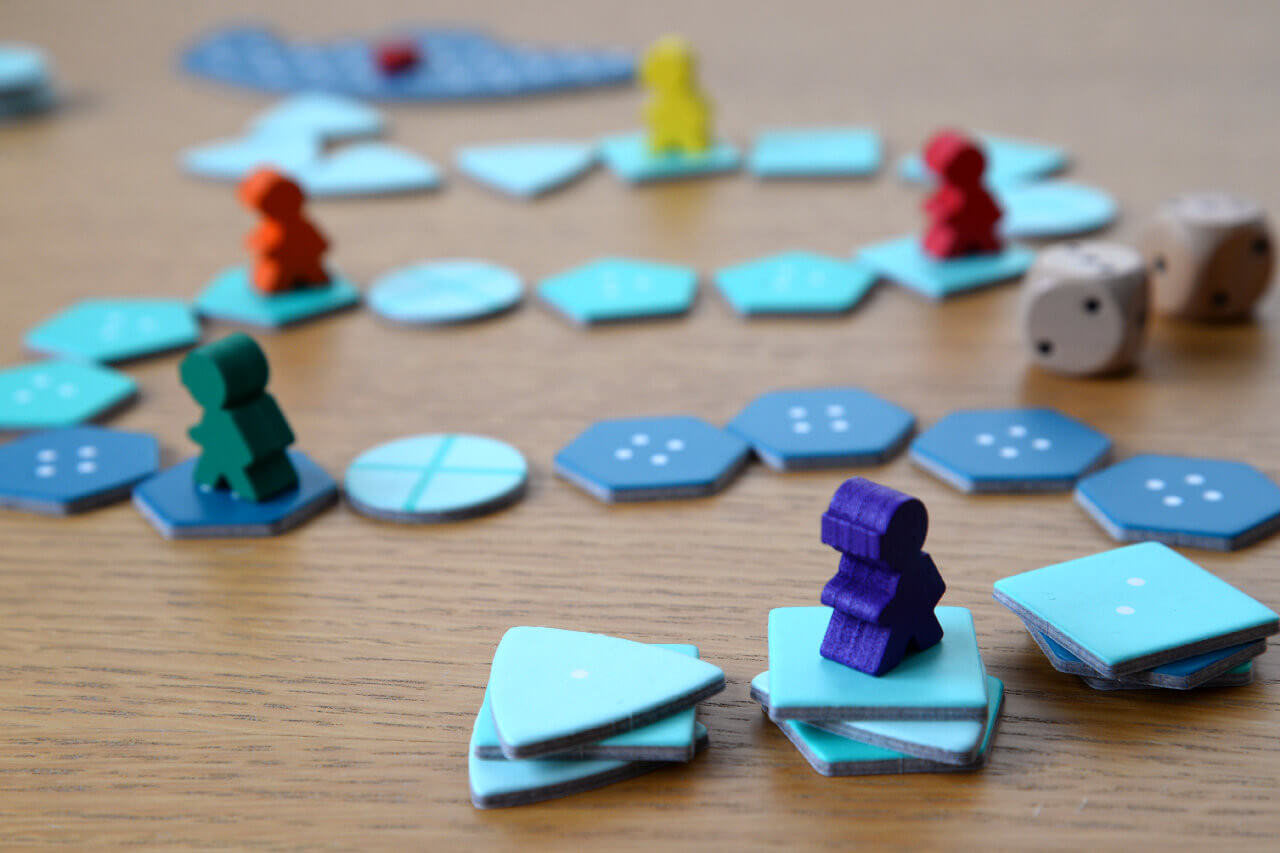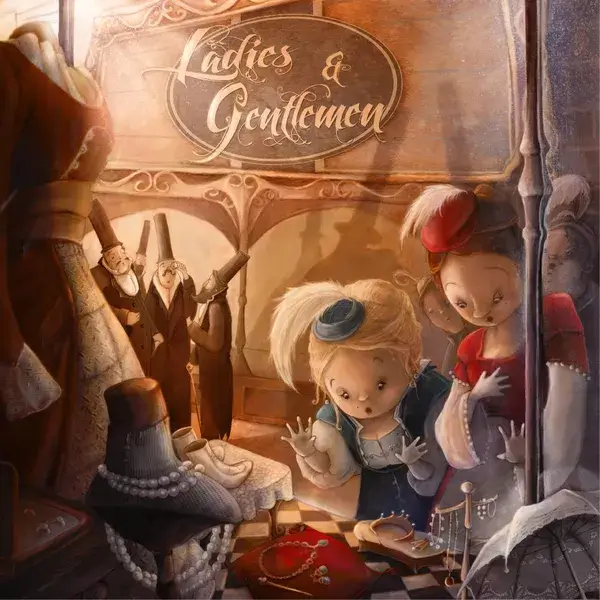
11 Great Board Games for Groups with Mixed Experience Levels
By Chalene Scott
Head of Community
Don’t worry about inviting your serious gamer friends and your new gamer friends to the same game night; check out these fantastic options to keep everyone happy.
As board gaming becomes ever more popular, it’s likely you have friends at various stages in their board game journey. If you want to get them all together in one room and still have a good time, these are some of my top picks ordered by maximum player count (because I couldn’t possibly rank them).
These games are more board gamey than, say, Pictionary or Trivial Pursuit but are still accessible so new players will find their way quickly enough with a bit of guidance. Some of them are team-based and some have roles with varying levels of complexity (a great way for experienced and inexperienced players to enjoy the same game).
1. Fugitive by Tim Fowers (2 players)
With two very different roles to fill, this is a great game to introduce asymmetrical play. The Fugitive is running away from the Marshal using cards as hideouts, while the Marshal needs to find all the Fugitive’s hideouts before they make it to their plane. I normally take the role of the Marshal as many people find it a bit more stressful, and my rookie opponent gets to play the Fugitive where, as long as you don’t run yourself out of cards, it’s hard to go wrong. There’s a small, non-verbal bluffing element which is about the perfect amount of complicated. My opponent almost always wants to play again immediately so we can swap roles.

2. Burgle Bros. by Tim Fowers (up to 4 players)
(I may have a thing for Tim Fowers…) It’s Ocean’s Eleven in a board game; crack the safe on all three floors and escape to the roof where your helicopter awaits. This co-op game is great because all new players need to know is their basic actions and how the guards move, the rest can be learned as tiles are revealed. I normally spend very little time teaching before we kick off. Also, just as in a real-life heist, each team member has a special ability to offer, which ensures that everyone gets to feel like they’re contributing to the success of the mission.

3. Trapwords by Jan Březina, Martin Hrabálek, Michal Požárek (4 or more, played in teams)
In Trapwords, the other team writes a list of words you can’t say while describing a thing to your teammates and they don’t tell you what those words are! I love this game for how often we discover someone sleeper agent who’s unexpectedly amazing at figuring out what words to write down to trip people up. This is not an easy game (new players might feel put on the spot when it’s their turn to describe the word) but the sense of accomplishment you feel when your team guesses correctly is huge. Small game, big feelings, lots of laughs!

4. Pictures by Christian Stöhr, Daniela Stöhr (up to 5 players)
Players draw a token from the bag to find out what picture they’ll be recreating that round with the materials available to them. It’s truly amazing what you can do with a few sticks and stones or two uneven shoelaces. This game has a very low entry barrier and I still find it highly entertaining each time I play. It’s so satisfying when you finally start to understand someone’s “art” style and can guess what they’ve made while everyone else is scratching their heads.

5. Guillotine by Paul Peterson (up to 5 players)
Gameplay is simple: play an action card if you want to, collect the noble from the front of the line, draw an action card. Learning the rules is super easy and then the action cards mess everything up. This game has a high randomness factor, which turns off some serious gamers, but for those interested in the idea of trying to make order out of chaos, this is a fantastic, silly game. I like this one because it’s simple and swingy, helping newbies get used to the idea of a game that can change on a dime. (Do those still exist?) It’s humbling and exhilarating in equal parts.

6. Deep Sea Adventure by Jun Sasaki and Goro Sasaki (up to 6 players)
In Deep Sea Adventure, you and your fellow divers collect treasure from the ocean floor with a shared air supply, but don’t worry, you don’t start losing oxygen until someone picks up a treasure. I love this because new players will grab treasures willy-nilly and wiser players will be more strategic about what to pick up. The trickiest part of this game is managing to resurface with any treasure, which newbies will feel is quite random and experts will realise it’s highly dependent on what the newbies are doing. The rules are easy to comprehend but that moment when you understand how punishing they are is brilliant!

7. Tales of the Arabian Nights by Anthony J. Gallela, Eric Goldberg, Kevin Maroney, Zev Shlasinger (up to 6 players)
This one is more complex than most other games on this list but at its heart, you roll, you move, you make a decision. It’s so absurd and unpredictable that it truly doesn’t matter what you do in most cases, someone with bad judgement may end up a king while the cautious, logical player gets smote by an angry djinn. We usually play the shortest version of the game when we play with more than four because when those statuses start piling up, things can get a bit frustrating. Some of what I said doesn’t sound like an endorsement for this game but we always laugh until we cry. It’s my favourite party game, by far.

8. Not Alone by Ghislain Masson (up to 7 players)
I pull this one out when we have that one guy over (you know, the guy) with friends who aren’t nearly as serious about board games as he is. One vs many is great for that guy. That guy gets to be the alien and the rest of us run around wildly, some with reason, some without. You just have to play a card. That’s it. Once you figure out what’s going on you can get more strategic about it, and table talk and mind games will start to play more of a role as people figure out what they’re supposed to be accomplishing.

9. Bohnanza by Uwe Rosenberg (up to 7 players)
The flow here, again, is simple: plant a bean or two from the top of your deck, flip two for trading, plant traded beans, draw three cards. My favourite part about this game is that you can’t rearrange the cards in your hand, which can lead to absurd deals during the trading phase. I’ve found that new players are often suspicious of really good offers until they get stuck harvesting a great field early because they didn’t trade away the Garden Bean they’ll never be able to harvest. [ Alt for comment and highlighted: I’ve found that new players are often suspicious of really good offers and surprised to have made such a great deal. The win-win situation gives new players ] Sometimes it takes a few rounds but Bohnanza is usually good for giving players the confidence to stand up for themselves against more experienced opponents because the open information looks like one thing but no one else knows what aces they might be holding.

10. Captain Sonar by Roberto Fraga, Yohan Lemonnier (plays best at 8)
Realtime battleships, what could be more exciting? This can be a high pressure situation so may not be for everyone but the variety of roles means that a complete novice could take on the role of First Mate to an experienced Captain and neither should get frustrated with the other. With each role being its own mini-game, you may have to play a few times for everyone to find their favourite spot in the crew.

11. Ladies & Gentlemen by Loïc Lamy (plays up to 10)
Played in teams of two (a lady and a gentleman), this absurd, binary send-up of ye olden times is a riotous romp. The gentlemen go to the stock market to earn as much as possible so the ladies can spend it all on fancy dresses and accessories for the ball. The best dressed lady wins the game for her team. The gentlemen have the less complicated role by far so your inexperienced players will have an easier time at the stock market paired with an experienced lady to spend their money. We always have a good time developing the relationship dynamics in the pairs. Depending on how game your players are, this is absolutely the best part of the night!
